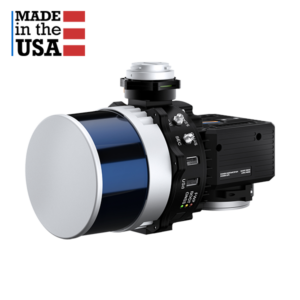Aerial & Terrestrial Survey with Airborne Laser Scanning Lidar
LiDAR, or Light Detection and Ranging, is a remote sensing device that creates detailed 3D maps of the surroundings using lasers. This technology has transformed the world of geospatial surveying by providing precise and detailed data for a wide range of applications.
One of the most common applications of this technology is topographic mapping LiDAR. LiDAR survey technology can build detailed maps of the landscape, including elevation, slope and other critical topographical data, by scanning the environment with laser beams. This information is critical for a number of businesses, including urban planning, civil engineering and natural resource management.
Another notable application of LiDAR in geospatial survey technology is airborne laser scanning. Surveyors can swiftly and efficiently map broad areas, such as forests, marshes and mountainous terrain, by putting LiDAR survey sensors on aircraft. This technology is especially valuable for environmental monitoring because it provides detailed data on vegetation, land cover and other critical ecological characteristics.
The analysis of remote sensing data is a critical component of geospatial survey technology. Surveyors can gain a full understanding of the environment by combining LiDAR with other remote sensing technologies such as satellite imaging and aerial photography. This information can be utilised for a variety of purposes, such as disaster response, natural resource management and climate change research.
Another key application of LiDAR in geospatial survey technology is ground-based LiDAR mapping. Surveyors can acquire comprehensive information about structures, highways and other constructed environments by putting LiDAR survey sensors on cars or tripod-mounted devices. This information is required for a variety of applications, such as infrastructure planning and asset management.
Finally, LiDAR is an effective tool for geospatial survey technology. Because of its ability to give precise and detailed environmental information, it has become a key component of many industries, including urban planning, civil engineering and environmental monitoring. As technology advances, we may expect increasingly more powerful and novel geographic data collecting and analysis tools.
Most 3D LiDAR scanning system also uses SLAM (Simultaneous Localisation and Mapping) technology, which measures the location of those features using LiDAR and inertial navigation to determine an approximate new position. An algorithm is then used to match the features to their previous positions. It also adds new observations of features not observed previously. This process produces a map of the environment.

- Laser Scanner
- Control & storage unit including IMU, GPS receiver;
- Camera Module;
- External SSD for data storage
Most 3D LiDAR scanning system also uses SLAM (Simultaneous Localization and Mapping) technology, which measures the location of those features using LiDAR and inertial navigation to determine an approximate new position. An algorithm is then used to match the features to their previous positions. It also adds new observations of features not observed previously. This process produces a map of the environment.
The Advantages of LiDAR Surveying
Using a LiDAR survey is an excellent way to get a better view of land. It can provide highly detailed information about a region by detecting features and measuring their distances. It is used by engineers and earth scientists for a variety of industries. LiDAR surveying has many advantages over traditional survey equipment and photogrammetry:
First, it’s faster and more accurate. LiDAR survey technology is usually accurate to within two centimetres. Furthermore, it requires fewer resources. The system works quickly, and can be mounted to an aerial craft like drone, UAV or helicopter. This means that it can be used to survey difficult areas and to avoid damaging the environment.
Secondly, it can be used in difficult or inaccessible environments. Using mobile laser scanners also makes it possible to perform surveys remotely and transmit high-fidelity images.
Additionally, the data generated by a LiDAR survey can be easily integrated with other sources of data to create a high-quality 3D model. For example, by using the point cloud post-processing software, deliverables such as DEM, DSM, CHM, contour lines and vectorised 3D model can be easily generated for the downstream workflow.
LiDAR is especially useful for mapping areas beneath tree canopy and narrow structures. Photogrammetry cannot always recognise such objects. LiDAR can also be used in poor lighting conditions and at night. This technology allows for faster data acquisition operations. In addition, photogrammetry requires more Ground Control Points (GCPs) than LiDAR does.
Another advantage of a LiDAR survey is its speed.
The output of a LiDAR survey can be incredibly useful in construction planning. It can be used to analyse the suitability of land for a construction project, and it can even highlight small details, such as the condition of existing roads and buildings. This data can also help construction crews better plan their budgets.
Different Types of Laser Scanning System
LiDAR survey data is invaluable for construction planning. A LiDAR system can generate 3D models that are accurate up to 5 cm. These models are also important for assessing the risk of landslides and floods. A LiDAR survey provides more detailed information than conventional topographical surveys. This survey laser scanning system can be installed on different platforms, mainly including airborne platform and terrestrial platforms.
Aerial Survey LiDAR Systems
Aerial LiDAR survey systems are similar to radar or sonar in that they fire laser pulses into the air. Unlike photogrammetry, which uses visual RGB images to create an image, LiDAR generates thousands of data points to produce an image. This technology opens up a wide range of possibilities for precision LiDAR surveying. These aerial systems can map both large and small areas. They are particularly useful in large, complex areas.
LiDAR surveying is ideal for civil engineers, because it is fast and accurate. Unlike traditional surveys, LiDAR data can be collected in any time of day. Using this technology, surveyors can produce detailed 3D images of a site in no time. Moreover, LiDAR can be used for machine control modelling and planning.
An aerial LiDAR survey system uses a laser mounted on a drone to map large areas. This technology is best used when dense 3D data needs to be collected in large areas. The laser beams are used to measure elevation, distance and density. This data can be manipulated to produce a wide range of analytical products.
A drone-mounted LiDAR is a more affordable alternative than manned aircraft, and can survey difficult areas with great accuracy. This method can be used to create 3D maps of land with low personnel requirements. A drone can also fly much lower than manned aircraft. And the high-resolution LiDAR survey data can be used to make accurate digital surface models and landscape maps. A drone can also provide ground control points to confirm the accuracy of the survey.
3D mapping systems are available for aerial and land survey, which have been applied in mining, forestry, powerline inspection, utility and geology industries.
-
UAV LiDAR Payloads
LiAir H800 Drone LiDAR Scanner – Long Range & High Efficiency UAV Scanning
US$65,000.00 Excl. GST/VAT Read MoreRated 0 out of 5 -
drone lidar with premium INS
RESEPI-TELEDYNE CL-360HD – From Inertial Labs, Manufactured In USA
Read MoreRated 0 out of 5 -
drone lidar with premium INS
RESEPI-LIVOX AVIA – From Inertial Labs, Manufactured In USA
Read MoreRated 0 out of 5 -
drone lidar with premium INS
RESEPI-HESAI XT32M2X – From Inertial Labs, Manufactured In USA
Read MoreRated 0 out of 5 -
drone lidar with premium INS
RESEPI-HESAI XT32 – From Inertial Labs, Manufactured In USA
Read MoreRated 0 out of 5 -
Entry Level drone LiDAR
LiAir X3 + LiGeo Software and Camera – Global Shipping – Free Software Included
Read MoreRated 0 out of 5 -
Entry Level drone LiDAR
LiAir X3C-H Drone LiDAR Scanner – 32 Channel LiDAR Sensors – 300M Dection Range
Read MoreRated 0 out of 5 -
GNSS Receiver
LiBase – GNSS RTK GPS Receiver for Both Rover & Base Station – IMU Supported
US$2,916.00 Excl. GST/VAT Add to cartRated 0 out of 5
Contact Us
Terrestrial Survey LiDAR Systems
A SLAM scanner has an advantage over other scanning technologies. Because it can be handheld, backpack and vehicle-mounted, it is convenient and portable. It also has a high speed. Besides the increased speed, a SLAM scanner is affordable. Its speed reduces the labour costs of the project.
Another advantage of the SLAM LiDAR scanner is its versatility. It can be used indoors or outdoors and can accurately map a large area in less time. It is easy to set up and can respond to the needs of urban environments. This type of scanner is also capable of performing 3D analysis of point clouds.
A SLAM algorithm works by analysing the sensor data to determine the position of a target object. Then it uses computer vision to compare the new data with the previous ones. This process is repeated repeatedly to build a trajectory of an object.
-
Backpack LiDAR Scanner
OmniSLAM Handheld & Backpack LiDAR Scanner R8+ – Millimeter Accuracy
Read MoreRated 0 out of 5 -
Handheld LiDAR Scanner
Trion P1 Handheld LiDAR Scanner – Cost Effective & Georeferenced Point Cloud Generation
Read MoreRated 0 out of 5 -
Handheld LiDAR Scanner
LiGrip H300/H120 Handheld LiDAR Scanner – Backpack, Vehicle-mounted Platform Supported
Read MoreRated 0 out of 5 -
Mobile LiDAR Scanner
LiMobile – Vehicle Mounted LiDAR Scanner With Planar & Panoramic Camera Integrated
Read MoreRated 0 out of 5 -
GNSS Receiver
LiBase – GNSS RTK GPS Receiver for Both Rover & Base Station – IMU Supported
US$2,916.00 Excl. GST/VAT Add to cartRated 0 out of 5
“Designed by Surveyors Built for Surveyors”
Customer success is everything we care about.
Customer support is what sets us apart.
Applications and Case Studies For LiDAR Survey Equipment

Smart City And Building Information
Advantages: • It can be equipped with different • Data collected from LiDAR are of high accuracy • Both under & above ground • 3D modelling of enterprise for planning, controls, simulations, safety, mapping, etc. • The data can be used in digital cities, digital forestry, digital cultural relics, and digital water conservancy.

Foresty Information
Intelligent and Automated Solutions for collecting and Managing Forestry Information: • How many trees are there in a specific area? • How tall are the trees in the area that I am going to harvest timber from? • How much carbon is stored in the biomass of the forests that I am studying? • How much wood will get the forest in front of me yield at harvest?

Mining Application
Mining companies around the globe are adopting new digital tools to increase their productivity and capitalize on innovation that is taking place in 3D surveying and mapping. GVI provides advanced lidar solutions that help companies build cost-effective, step- change increases in performance that are also sustainable.

Architecture, Engineering & Construction
GreenValley International (GVI) offers the most advanced and reliable LiDAR equipment which helps users obtain the point cloud with high-accuracy and high-density. Also, the software offered by GVI gives users a perfect user experience when georeferencing and process the point cloud data. Last but not least, GVI’s software allows users to export the point cloud data into various data formats which can be imported by third-party software for further process and generate different kinds of 3D models.

Transmission Line Inspection Solution
To better support the inspection of power line and transmission tower, we here introduce a solution for smart inspection of power line and transmission tower through the combination of UAV LiDAR and photogrammetry.

HD Map
GVI's HD Map Solutions include: Data Acquisition; Data Fusion; Object Dection; Vectorization and Mapping;











